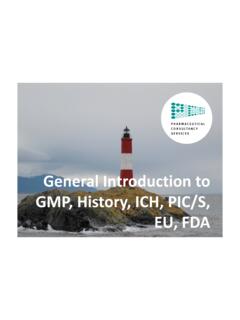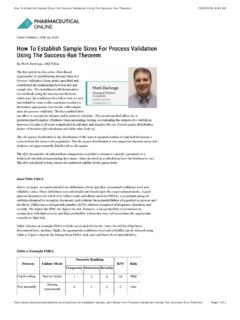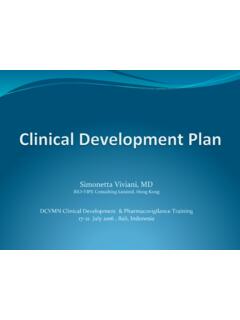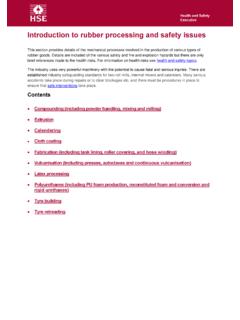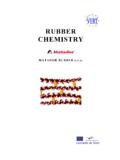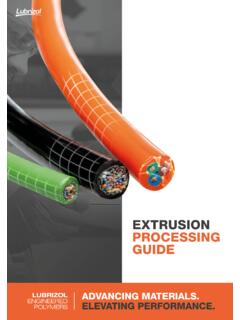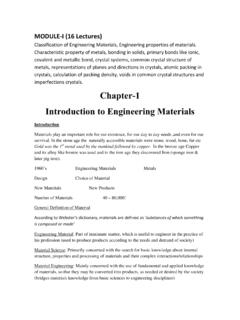Transcription of Aseptic Processing Practices and Process Validation of ...
1 CBE 107 V1 Aseptic Processing Practices and Process Validation of Aseptic Operators CBE Pty Ltd This training program is copyright to CBE Pty Ltd and may not be modified, reproduced, sold, loaned, hired or traded in any form without its express written permission. 1 introduction CBE 107 V1 2 Module Outcomes On completion of this module the participant should be able to: Relate relative risks between terminal sterilisation and Aseptic Processing Interpret the requirements of the FDA and PICs guides to Aseptic Processing . Define the importance of media fills/ Process simulations to sterility assurance State the Validation requirements and acceptance criteria for Aseptic media fills Identify worst case conditions and critical interventions introduction CBE 107 V1 Module Topics Describe risks associated with Aseptic Processing Sterile Processing GMP Expectations Identify related support systems Outline a worst case media fill for Aseptic Processing Validation introduction CBE 107 V1 Important References PIC/S Guide to Good Manufacturing Practice for Medicinal Products Annex 1 Manufacture of Sterile Medicinal Products PIC/S Recommendation on the Validation of Aseptic Processes January 2011 FDA Guideline on Sterile Drug Products Produced by Aseptic Processing Sept 2004 PDA - Points to Consider for Aseptic Processing ISO 13408-1:2008 Aseptic Processing of health care products Part 1.
2 General requirements (parts 2-8 also deal with Aseptic Processing ) PDA Technical Report No. 28 Process Simulation Testing for Sterile Bulk Pharmaceutical Chemicals General GMPs CBE 107 V1 How do we make sterile products ? There are two main approaches used in our industry Terminal sterilization where the final filled product is sterilized ( in an autoclave or by irradiation.) Media Fill is not required. Option not availabe lfor biologics. Aseptic Processing where all materials, packaging and solution are sterilized separately then assembled aseptically to give final product. This requires media fill Validation . 5 General GMPs CBE 107 V1 Sterility Assurance Sterility Test is limited does not provide sufficient sterility assurance PNSU < 14% (95% confidence) Media Fills are far more relevant PNSU < (99% confidence) Only as good as critical parts & control of bio-burden: Aseptic Operators Technique and Interventions Sterilization Systems HVAC Systems Product filtration programs Cleanroom / Facility / Pressure etc.
3 Cleaning and sanitation program Movement of materials into Grade B and Grade A 6 General GMPs CBE 107 V1 Sterile Products and Risk With terminal sterilization, provided the bioburden is not too high, the final product will be sterile. The risk of having an unsterile product is very low. Very very few sterility based recall are from terminally sterilized product. With Aseptic Processing even if all components and solution are sterile poor technique by an operator can introduce microbial contamination and make the product unsterile. The more manual the Process is, the higher the risk. 7 General GMPs CBE 107 V1 Minimizing contamination Risk Rate the List! Items What we do to prevent microbial contamination Vials Sterilized and depyrogenated with dry heat oven or tunnel rubber Closures / Caps Sterilized by autoclave Chemicals Tested to be sure microbial contamination is within specification. Water for Injection Held at high or low temperature and ozonated Sundry items (scissors, scoops.)
4 Tweezers, etc) Sterilized by autoclave / Hot Air Oven Air Supply Air is especially filtered to reduce chances of microbial problems. HEPA filters are tested regularly to verify efficiency. Operators Trained so they understand Aseptic technique. Technique verified by media fill challenge Garments We use sterile garments to protect product Production environment We sample and test to verify absence of microbes Bulk Tanks Cleaned and sanitised we test to show they are clean Sterilising Filters Are supplied sterile or sterilized in house 8 CBE 107 V1 Industry Trend (Regulator Preference) Controlling contamination is always better than monitoring it Minimise / eliminate hand filling operations Expect minimal machine interventions relies upon well tuned and reliable equipment. Separate operators from the exposed product Semi closed Restricted Access Barrier Systems (RABS) Fully closed RABS Isolator Technology 9 CBE 107 V1 Bulk Product Prepare Stoppers Sterile Filter Bulk Liquid Depyrogenate Vials Wash Vials Aseptic Processing of Vials Grade A Environment 10 100% Inspect 100% Incubate Label and Pack Sterilise Stoppers Prepare Seals Sterilise Seals Fill Vials Stopper Vials Seal Vials Sterile Filter Transfer Seals Transfer Stoppers Air HEPA People Gown Sanitant Sterilise General GMPs Materials Sterilise & Sanitise CBE 107 V1 Some Basic GMP Rules cGMP Annex 1 Low to no reliance on the sterility test Only sterilized or sanitized items in Grade B, then A Aseptic technique is critical worst case challenged Aseptic operators must be qualified, re-qualified or dis-qualified EM programs must include set up as well as operation Intervention = Risk.
5 Keep people remote from product Cannot be any air entrainment from B to A space Intensive monitoring program All incidents/events must be reviewed 11 General GMPs CBE 107 V1 Grade A Critical Space and Critical Surfaces Critical Space Grade A / ISO 5 A critical space is one in which the sterilized drug product, containers, and closures are exposed to environmental conditions that must be designed to maintain product sterility. Critical Surfaces within Critical Space Not all Grade A space is a critical surface. Surfaces that may come into contact with or directly affect a sterilized product or its containers or closures. Critical surfaces are rendered sterile prior to the start of the manufacturing operation, and sterility is maintained throughout Processing . Generally monitored post Processing . 12 Environmental Monitoring CBE 107 V1 Critical Space and Critical Surfaces 13 Environmental Monitoring CBE 107 V1 Air Visualization in Grade A Space Identify worst case locations for EM monitoring Look for turbulence in Grade A Look for entrainment B to A Must do in at rest state Must do in simulate dynamic state around interventions Must do whenever major change Should repeat periodically Must have a protocol and visualisation report prepared by QC/QA Microbiology Can use videos as training tools for Aseptic operators 14 CBE 107 V1 Aseptic Processing and Sterility Assurance Personnel capability Aseptic technique Environmental Controls Processing Line Integrity Product Filtration Media Fill Validation Sanitation Procedures Incident responsiveness Room and HVAC integrity Sterilization processes 15 Key systems people in red Personnel CBE 107 V1 People & Aseptic Processing
6 People continuously shed microbes & particles into their surroundings; cleanroom garments do not contain all of the organisms present on human skin. People represent the main risk for non-sterile products The presence of contaminating microorganisms during Aseptic interventions is largely unavoidable. The transfer of those organisms to the critical space is avoidable. Try to manage and control the level of unplanned interventions. 16 Personnel CBE 107 V1 17 Personnel: Aseptic Personnel Qualification Program Demonstrate an understanding of applicable Standard Operating Procedures (SOPs) Demonstrate an understanding of Basic Microbiology Demonstrate an understanding of Aseptic Practice Theory and Cleanroom behavior Demonstrate gowning proficiency by actually completing three consecutively successful gownings. Successfully complete a Media Transfer Evaluation within a Grade A hood in a laboratory environment demonstrating successful Aseptic technique simulating interventions.
7 Successfully participate in a Process simulation (media fills) annually covering interventions Personnel CBE 107 V1 Other Personnel Management Rules Cannot be in Grade A until fully qualified assistant in Grade B Frequent glove/gown surveillance if failing must have re-training and re-qualification. Maintain a table of results Dis-qualified if cannot meet standards Any positive on Grade A gloves is a problem must be investigated 18 Personnel CBE 107 V1 Media Fill Validation Evaluates the entire Process Must occur every 6 months per Process line per shift Must include all Aseptic operators over time eg. annually Must include ancillary staff who have to enter the room Must be worst case challenge to the Process : Routine and non-routine interventions by each operator Different container closure combinations Maximum # personnel in the room Changeovers and sterile hold times for equipment 100% inspection Process Run size: 5000 or maximum # processed on lien for the container closure combination.
8 Pass = NIL positives 19 Media Fills CBE 107 V1 In an ideal (risk free) world every potential risk would be covered in the media fill Every sterile bulk hold period would be simulated for the maximum hold period Aerobic and anaerobic media would be used Simulation of the maximum permitted bulk hold time and maximum filling time Every possible intervention, stoppage, Process , procedure or worst case situation would be simulated Every possible container/closure combination would be tested Every Aseptic operator would perform every intervention 3 times > 10,000 container per run and would be zero positives 20 Media Fills CBE 107 V1 Risk & Aseptic Processing Tasks Task Ease of Validation Reliance on Personnel Associated Risk Sterilization Easy Low Low Room Design N/A N/A Moderate Monitoring Moderate Variable High Sanitisation Difficult High High Gowning Difficult High High Material Transfer Difficult Very High Very High Aseptic Technique Difficult Very High Very High Aseptic Assembly Difficult Very High Very High 21 Media Fills CBE 107 V1 22 Process Interventions Principle: Avoid interventions, Where they are unavoidable, minimize their impact.
9 Routine interventions are activities that are inherent parts of the Aseptic Process and integral parts of every batch. Non-routine interventions are activities that are predominantly corrective and may not be a part of every batch. Media Fills CBE 107 V1 Risk Rating of Interventions Risk Rating Intervention Activity Potential Contamination Risk Frequency of inclusion in media fill Glove monitoring post intervention 5 Critical Surface or Aseptic connection Very High Every Fill Yes 4 Proximity to an open container High Every Fill Yes 3 Remote to an open container/closure Medium Once per year No 2 Post Capping Low Once per year No 1 Grade B activity Very Low Once per 2 years No 23 CBE 107 V1 Routine Interventions Routine interventions are interventions that are normal parts of Aseptic Processing . These may be: Aseptic assembly of equipment before use (stopper bowl, cap bowl etc. Adjustment of the machine tracks Initial product connections ( to filler or to filter) Siliconing of the vial turntable Fill weight checks Bubble point testing of filters Component additions (vials, stoppers, caps) Environmental monitoring Any other intervention that is part of the normal Process Stoppages due to meal or rest breaks 24 Media Fills CBE 107 V1 Non-Routine Interventions Non-routine interventions are any interventions that are corrective and are or should be uncommon.)
10 Examples are: In Process adjustment of the machine tracks Removing defective seals on containers Removing vials from the line that have jammed the machine Removing vials from the line that have fallen over Product filter change (initial bubble point failure ?) Replacement of filling needle or hose Product spillage or leakage Poorly fitting stoppers that require more manual manipulation Any other problem that requires manual correction 25 Media Fills CBE 107 V1 Grade A Intervention Rules Make sure the machine is stopped first ALWAYS sanitise hands thoroughly before going into Grade A space Keep as much of your body as possible out of the cabinet NEVER lean over to top of an open vial, stopper/cap bowl or the filling needle. Use sterile forceps to retrieve or remove upturned vials Do not intervene to remove stoppers, vials, caps that are not interfering with Processing clean up at the end Sample gloves post intervention Practice good Aseptic technique EVERY TIME!
